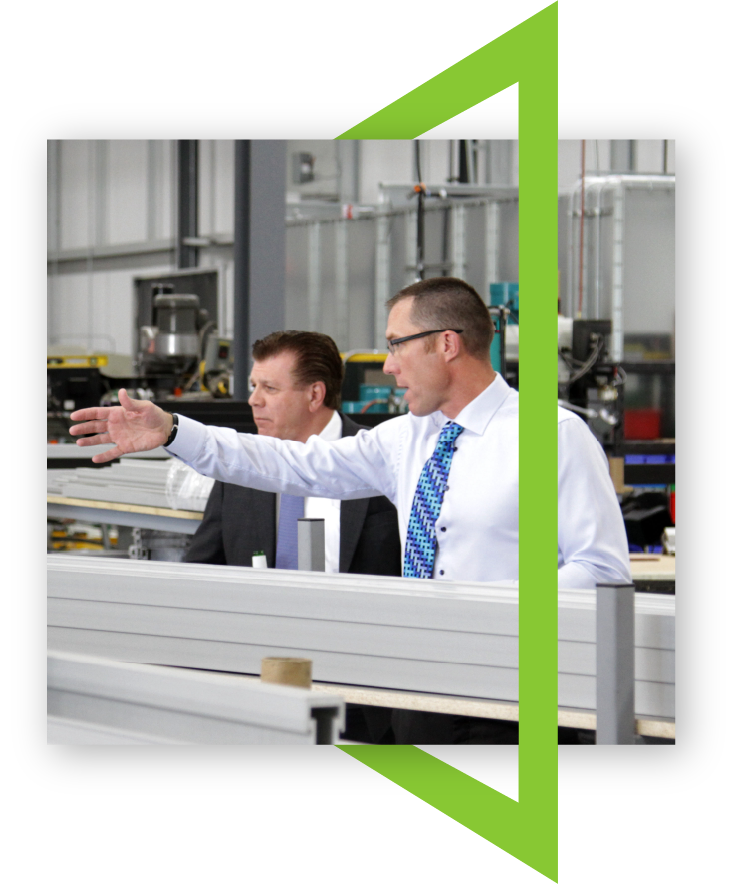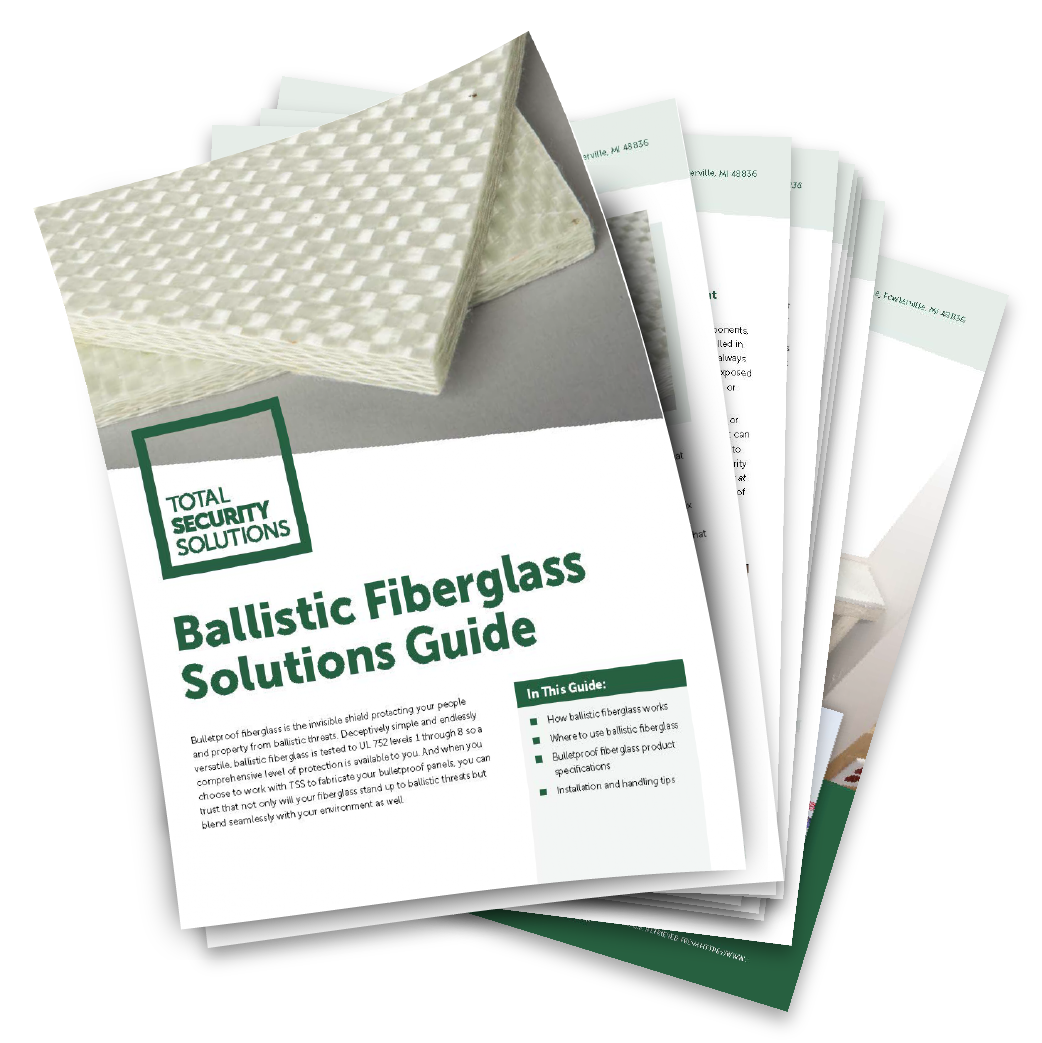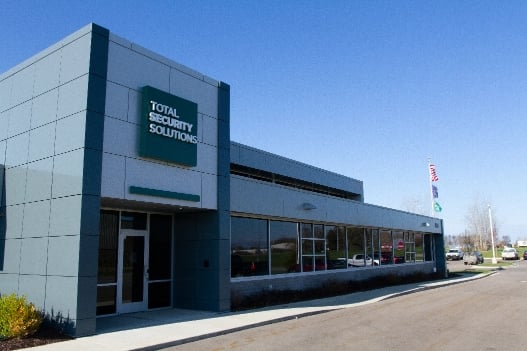Bulletproof Fiberglass Wall Panels
Bulletproof wall panels, sometimes called bulletproof drywall, are made from ballistic fiberglass.


Protect What Matters Most With Bulletproof or Ballistic Wall Panels
Ballistic wall panels are the most practical and effective way to make walls resist bullets. They’re made from layered, reinforced structural polyester laminate and press-molded between steel plates at high pressure and temperature. Fiberglass wall panels are designed to progressively delaminate as a bullet penetrates, distorting and flattening the projectile and dissipating the energy.
Bullet-resistant wall panels are available in UL Levels 1 through 8 and can be installed behind standard drywall or over existing structures. Custom finishes like veneers make the bulletproof panels blend in with the rest of the environment while delivering superior protection.
UL Level |
Thickness (inches) |
Weight (lbs./per sq. ft.) |
|
1 |
0.245 |
2.55 |
|
2 |
0.320 |
3.33 |
|
3 |
0.450 |
4.68 |
|
4 |
1.31 |
13.63 |
|
5 |
1.35 |
14.05 |
|
6 |
0.450 |
4.68 |
|
7 |
1.46 |
15.19 |
|
8 |
1.54 |
16.02 |
Visit our Product Specifications Page to view and download Data Sheets, 3-Part Specs, and more.
Talk to a Ballistic Protection Expert

How Much Does Bulletproof Drywall Cost?
Like any other ballistic product, bulletproof drywall costs increase as the level of protection increases. If you’d like an accurate estimate for your bulletproof drywall project, we strongly encourage you to reach out to a member of our team for a free quote.
We’ll meet with you, learn more about your goals, and provide recommendations based on your threat level and budget.
How Do Bullet-Resistant Wall Panels Compare to Other Building Materials?
If a wall is not designed to resist bullets, you can’t count on it to keep you safe in a dangerous situation. Standard building materials, like standard plasterboard drywall, are not impervious to bullets. Cinderblocks do resist bullets, but are not a practical material for retrofitting or aesthetics. Even wood on its own isn’t bulletproof.
The solution is bulletproof drywall. For new builds, ballistic panels can be installed before drywall is hung, offering invisible protection. For retrofit projects, bulletproof panels can be installed over walls and finished to resemble standard drywall as well as a variety of custom options. Our goal is always to provide bullet-resistant products that not only keep you safe, but blend right into your environment.
In these situations, fiberglass is ideal. Our skilled team can also use fiberglass to create safe rooms, reception areas, and other custom bulletproof barriers.
Ballistic Fiberglass Solutions Guide

Frequently Asked Questions About Bulletproof Fiberglass Wall Panels
Are fiberglass panels really bulletproof?
Not all fiberglass is bullet-resistant. Only fiberglass that has been specially fabricated—using multiple layers of woven fiberglass cloth, soaked in thermoset polyester resin, and cured under high pressure—can resist gunfire. This process creates a dense but lighter-weight panel compared to other ballistic materials like steel.
TSS panels are tested to UL 752 standards and available in protection levels 1 through 8, meaning they can stop everything from handguns to high-powered rifles, depending on the thickness and rating selected.
What makes bulletproof fiberglass effective against gunfire?
Ballistic fiberglass panels stop bullets through a controlled delamination process, where the bullet’s energy is absorbed and spread across layers of high-strength fibers. As the bullet deforms and slows, the fiberglass layers "grip" it, preventing penetration. Even a 1/4-inch panel can stop multiple 9mm rounds fired in close proximity.
Where are bullet-resistant fiberglass panels typically installed?
Fiberglass panels are commonly installed in walls, counters, desks, and doors—anywhere discreet ballistic protection is needed. They’re especially popular in teller lines, reception desks, administrative offices, and behind drywall in secure corridors or classrooms.
Can bullet-resistant panels be retrofitted into a building's existing walls?
Yes. Bulletproof fiberglass panels can be screwed into existing drywall or millwork and finished with paint or veneer. This makes them ideal for retrofits where adding protection without disrupting the aesthetic is a priority. For historical buildings, TSS offers custom solutions to match intricate details.
What’s the difference between bullet-resistant protection and forced-entry protection?
Bulletproof materials are tested to resist bullets, while forced-entry materials are tested to withstand physical attacks using tools. Some products, like ballistic fiberglass or glass-clad polycarbonate, offer both, but not always. Always confirm the rating you need.

TSS Is Ready to Help You Improve Security With Bulletproof Drywall
For decades, TSS has provided all types of businesses, organizations, and companies with the bulletproof glass they need to protect themselves and their customers. If you’d like to get started with acrylic bulletproof glass or any of our other products, please don’t hesitate to contact us or request a quote.